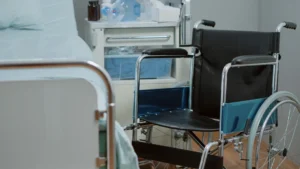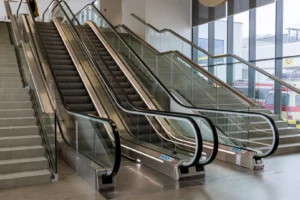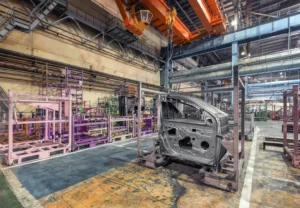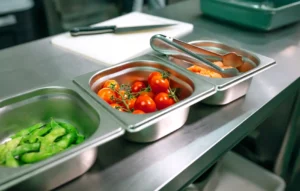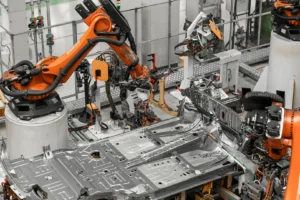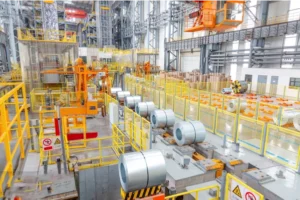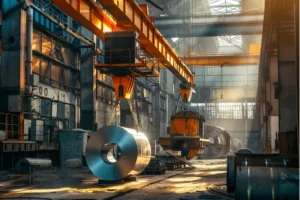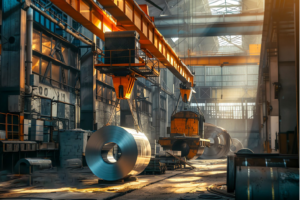Which is Better: Hot-Rolled vs. Cold-Rolled Steel Coil for Structural Applications?
Choosing the wrong steel can inflate project costs and compromise structural integrity. This single decision impacts budgets, timelines, and long-term performance, creating a significant point of failure if mishandled.
Hot-rolled steel is generally better for cost-effective, large-scale structural frames where tight tolerances are not critical. In contrast, cold-rolled steel is superior for applications demanding high precision, a smoother finish, and greater strength in smaller cross-sections, like secondary framing or modular components.
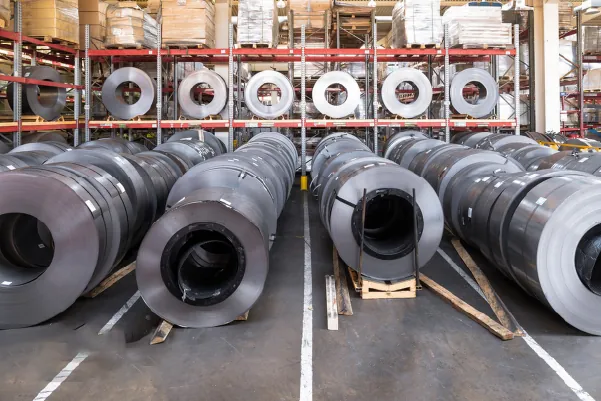
As the Global Business Director at MFY, I've seen countless projects succeed or stumble based on this single choice. The debate isn't about one being definitively "better" than the other; it's about which is right for your specific application. The key to optimizing your project for both cost and performance lies in understanding the fundamental differences and how they translate to real-world results. Let's break down the details so you can make the right call, every time.
What are the fundamental differences between hot-rolled and cold-rolled steel coils?
The terms "hot-rolled" and "cold-rolled" are often confused in the industry. This confusion can lead to incorrect material specifications, resulting in costly errors and project delays down the line.
Hot-rolled steel is processed at very high temperatures (above 1,700°F), making it more malleable and easier to form. Cold-rolled steel is essentially hot-rolled steel that undergoes further processing at room temperature, which increases its strength and improves its surface finish and dimensional accuracy.
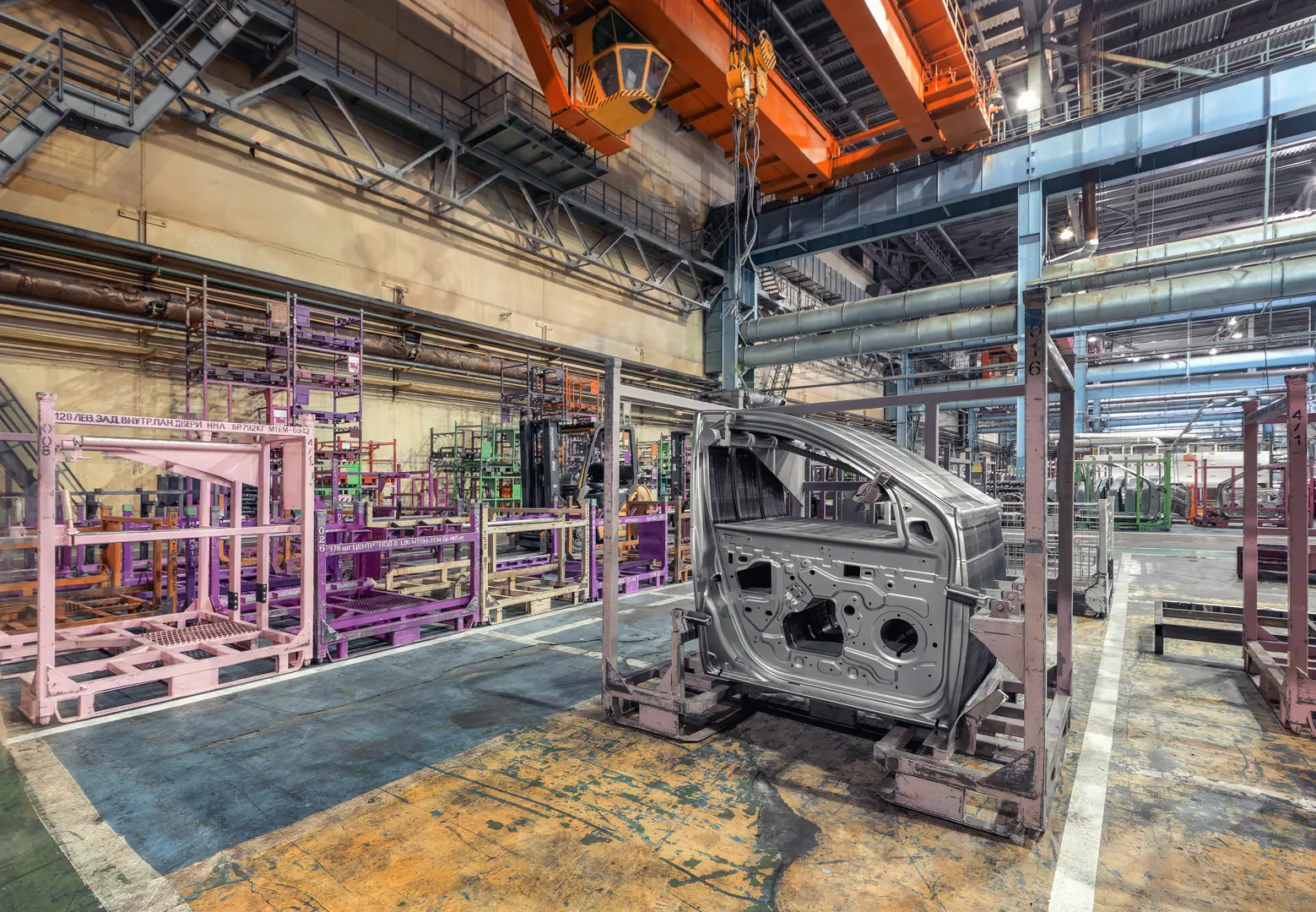
The distinction between these two materials begins and ends with temperature. This single variable in the manufacturing process creates a cascade of differences in their physical properties, performance characteristics, and ultimately, their cost. At MFY, we handle both types daily, and I always emphasize to my partners that understanding the "why" behind their properties is crucial. I remember a client in Europe who specified cold-rolled steel for a large warehouse frame, thinking "stronger is always better." While technically true, the added cost was substantial and completely unnecessary for the application. They could have achieved the same structural integrity with more cost-effective hot-rolled sections. This is a classic example of how a small misunderstanding can have a big impact on the bottom line.
The Manufacturing Process and Its Consequences
Hot rolling is a process that involves rolling steel at a temperature above its recrystallization point[^1]. This high heat makes the steel easy to shape and form into larger sizes. As it cools, it shrinks slightly, which leads to less control over its final shape and dimensions—hence, the looser tolerances. Cold rolling, on the other hand, takes place at or near room temperature. This process of cold reduction increases the steel's hardness and strength through strain hardening[^2]. It also allows for much tighter dimensional tolerances and a wider range of surface finishes.
Key Attribute Comparison
To make it simple, let's compare their core attributes side-by-side. This table is a quick reference I often share with clients to help them visualize the trade-offs.
| Attribute | Hot-Rolled Steel | Cold-Rolled Steel |
|---|---|---|
| Surface Finish | Scaly, rough surface | Smooth, often oily surface |
| Dimensional Tolerance | Less precise, looser | Very precise, tight |
| Cost | Lower | Higher |
| Strength & Hardness | Lower | Higher |
| Internal Stresses | Minimal | Higher (requires stress relief) |
| Workability | More malleable | Less formable |
How do these differences impact their suitability for structural applications?
A material's properties don't exist in a vacuum. Choosing based on one factor alone, like cost or strength, can lead to either structural failure or unnecessary over-engineering.
Hot-rolled steel's lower cost and excellent workability make it the go-to choice for heavy structural sections like I-beams, channels, and plates. Cold-rolled steel's superior strength-to-weight ratio and precision are perfect for lighter-gauge applications like metal studs, joists, and roof purlins.
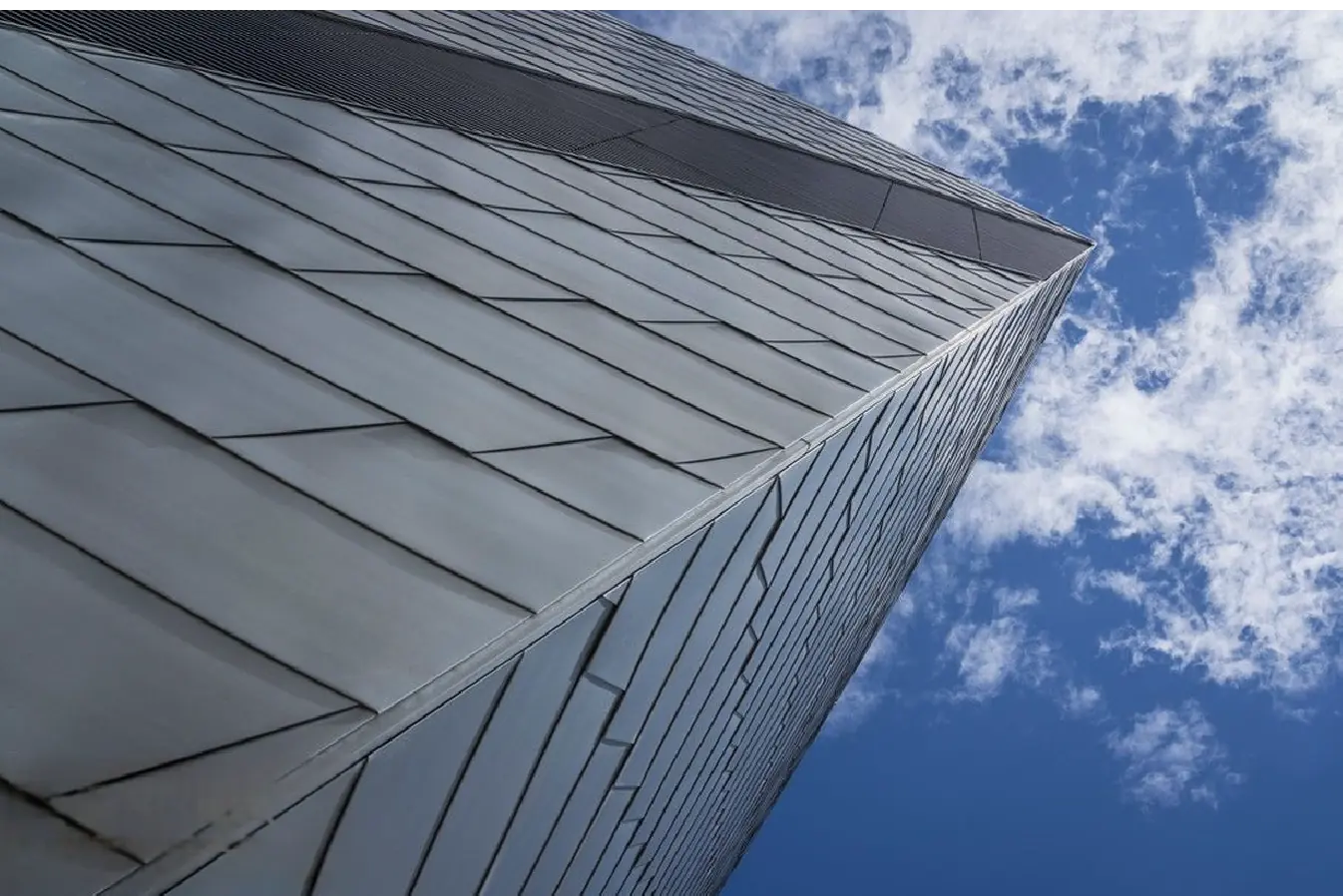
The application dictates the material. It's a simple rule, but one that requires a deep understanding of how these material properties perform under specific loads and conditions. We see this play out constantly in the projects we supply from our facilities in China. The demand for massive hot-rolled I-beams for skyscraper skeletons is just as strong as the demand for precision cold-rolled coils used in prefabricated building systems. Each serves a purpose the other cannot fulfill as efficiently.
Hot-Rolled Steel: The Workhorse of Heavy Construction
When you think of the massive steel skeletons of buildings, bridges, and industrial plants, you are looking at hot-rolled steel. For these applications, minute imprecision in dimensions is not a critical failure point; the overall strength and load-bearing capacity of the large sections are what matter. Its lower cost makes it economically viable for these large-scale projects where thousands of tons of steel are required. Furthermore, its excellent weldability and formability mean it can be easily fabricated on-site to meet the demands of complex structural designs. The primary goal here is robust, reliable strength at an efficient price point.
Cold-Rolled Steel: Precision and Strength in Lighter Frames
Cold-rolled steel shines where precision is paramount. Think of applications like steel framing for residential buildings, mezzanine floors, or support structures for equipment. In these cases, components must fit together perfectly. The tight tolerances of cold-rolled steel ensure that studs, tracks, and joists align exactly as designed, speeding up assembly and reducing on-site adjustments. Its higher strength-to-weight ratio also means you can achieve the required load-bearing capacity with less material, which can partially offset its higher initial cost per ton and is a key consideration for sustainable building practices.
What are the common challenges faced when using hot-rolled and cold-rolled steel in construction?
No material is perfect for every situation. Overlooking potential drawbacks during the planning phase can lead to unexpected delays, fabrication issues, and budget overruns during construction.
The main challenge with hot-rolled steel is its rough, scaly surface and less precise dimensions, which can complicate welding and coating. For cold-rolled steel, the primary challenges are its higher cost and increased susceptibility to corrosion if its protective coating is damaged.
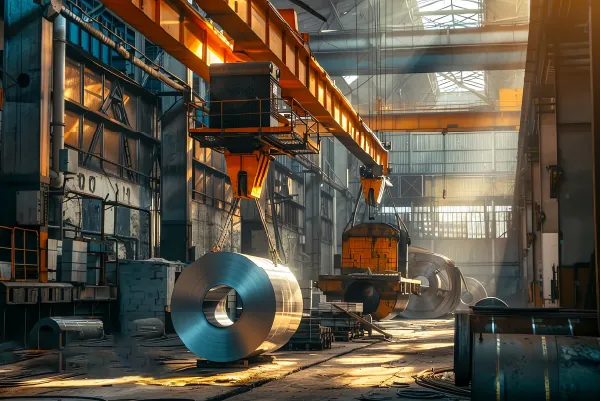
Awareness is the first step to mitigation. At MFY, we don't just sell steel; we provide solutions, and that includes helping our partners anticipate and manage these challenges. A project's success often depends on how well the team prepares for the inherent characteristics of the materials they've chosen.
Navigating Hot-Rolled Steel's Imperfections
The mill scale on the surface of hot-rolled steel must be removed before any protective coating or paint is applied. This requires processes like sandblasting or acid pickling, which add time and cost to the fabrication process. If this step is skipped, the coating will eventually flake off, exposing the steel to corrosion. Additionally, its looser dimensional tolerances must be accounted for in the design and fabrication stages. I recall a project in South America where connection plates had to be re-drilled on-site because the fabricator didn't account for the potential dimensional variance in the hot-rolled beams, causing a significant delay.
Managing the Costs and Risks of Cold-Rolled Steel
The most obvious challenge with cold-rolled steel is its higher price tag. This can make it prohibitive for projects with tight budgets unless its performance benefits (like reduced weight or faster assembly) create savings elsewhere. Another critical challenge is its vulnerability to corrosion. While often galvanized[^3] or coated, any scratch or cut that exposes the underlying steel creates a point for rust to begin. I remember a client in Southeast Asia where high humidity caused surface rust on cold-rolled components that were improperly stored on-site. This required costly rework and highlighted the importance of proper handling and storage protocols.
How to choose the right type of steel coil for specific structural applications?
With competing priorities of cost, performance, and aesthetics, making the final decision can be daunting. A poor choice at this stage can lock you into a suboptimal path for the entire project.
Choose hot-rolled steel for large, heavy-duty structures where cost is a primary driver and tight tolerances are not required. Opt for cold-rolled steel when precision, a superior surface finish, and a high strength-to-weight ratio are essential for the application.

To simplify this critical decision, I advise my partners to use a systematic approach. It's not about gut feeling; it's about weighing the project's specific needs against the distinct advantages and disadvantages of each material. This strategic foresight is what separates well-managed projects from those that run into trouble.
A Decision-Making Framework
Ask yourself and your engineering team the following questions. Your answers will point you directly to the most suitable material.
- Primary Structural Frame or Secondary Members? For the main skeleton (beams, columns), hot-rolled is the standard. For secondary elements like purlins, girts, or infill wall framing, cold-rolled is often a better fit.
- What is the Budget Priority? If minimizing upfront material cost is the most critical factor, hot-rolled steel has a clear advantage. If life-cycle cost, speed of assembly, or reduced weight are more important, the higher initial cost of cold-rolled may be justified.
- How Critical is Dimensional Accuracy? For prefabricated or modular construction where components are made off-site and must fit together perfectly, the tight tolerances of cold-rolled steel are non-negotiable. For traditional on-site fabrication, the flexibility of hot-rolled is often sufficient.
- Will the Steel be Visually Exposed? If the steel members will be visible in the final structure and a smooth, clean aesthetic is desired, cold-rolled steel provides a much better surface for high-quality paint finishes.
- What are the Environmental Conditions? Both materials require protective coatings, but the smooth surface of cold-rolled steel can sometimes allow for a more uniform and durable coating application, which might be a factor in highly corrosive environments.
What are the best practices for utilizing hot-rolled and cold-rolled steel coils in structural projects?
Selecting the right material is only half the battle. Improper handling, fabrication, or installation can easily negate the inherent benefits of your choice and compromise the final structure.
For hot-rolled steel, best practices include thorough surface preparation before coating and designing connections to accommodate its looser tolerances. For cold-rolled steel, it's crucial to protect its surface from damage and moisture, and to design against potential buckling in thin sections.
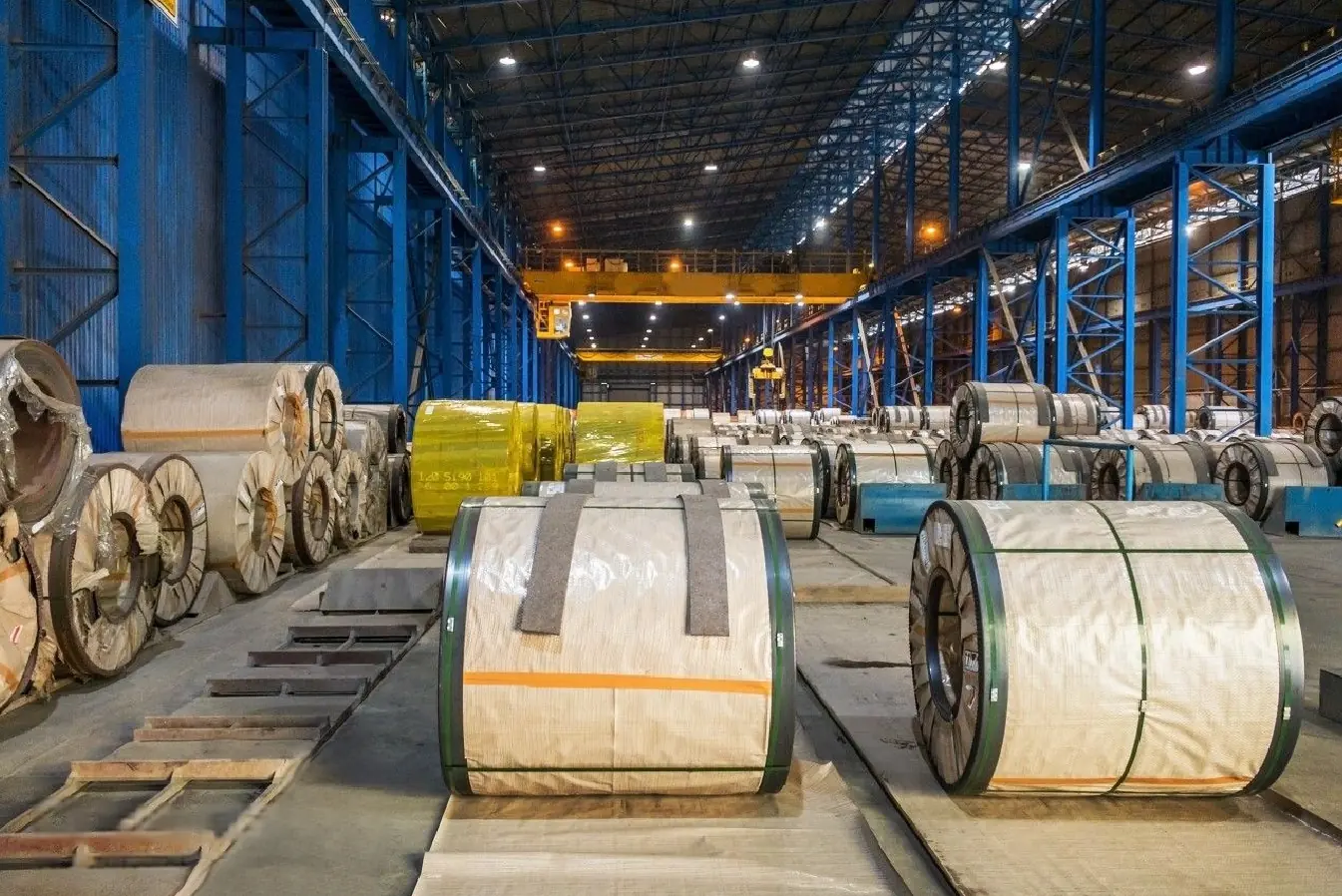
Executing a project successfully means respecting the material. At MFY, our integrated supply chain allows us to ensure quality from the mill to the port, but best practices must continue all the way to the final installation. Partnering with a supplier who understands these nuances is key.
Maximizing Hot-Rolled Steel's Value
To get the most out of hot-rolled steel, always factor in surface preparation. Specify sandblasting or pickling in your fabrication contracts to ensure a clean substrate for coatings. When designing, use connection details that are forgiving of minor dimensional variations. For example, using slotted holes instead of round holes for bolted connections can provide the necessary wiggle room to accommodate tolerances without compromising structural integrity. This simple design choice can save immense time and frustration on-site.
Optimizing Cold-Rolled Steel's Performance
The key to success with cold-rolled steel is protection. From the moment it leaves our facility to the moment it's installed, its surface must be protected from scratches, impacts, and moisture. Use proper storage techniques on-site, keeping it off the ground and under cover. During design, pay close attention to the potential for local or distortional buckling, as cold-formed sections are often thin. Proper bracing and the use of stiffeners are critical design elements that ensure the material's high strength is fully utilized. Furthermore, aligning with modern sustainability goals, using lighter, high-strength cold-rolled sections can significantly reduce the overall tonnage of steel in a project, minimizing both material cost and environmental footprint.
Conclusion
The choice between hot-rolled and cold-rolled steel isn't about which is universally better, but which is strategically right for your project. Balancing cost, precision, and strength requirements is the key to achieving both economic efficiency and the long-term structural integrity your project demands.
Have Questions or Need More Information?
Get in touch with us for personalized assistance and expert advice.

